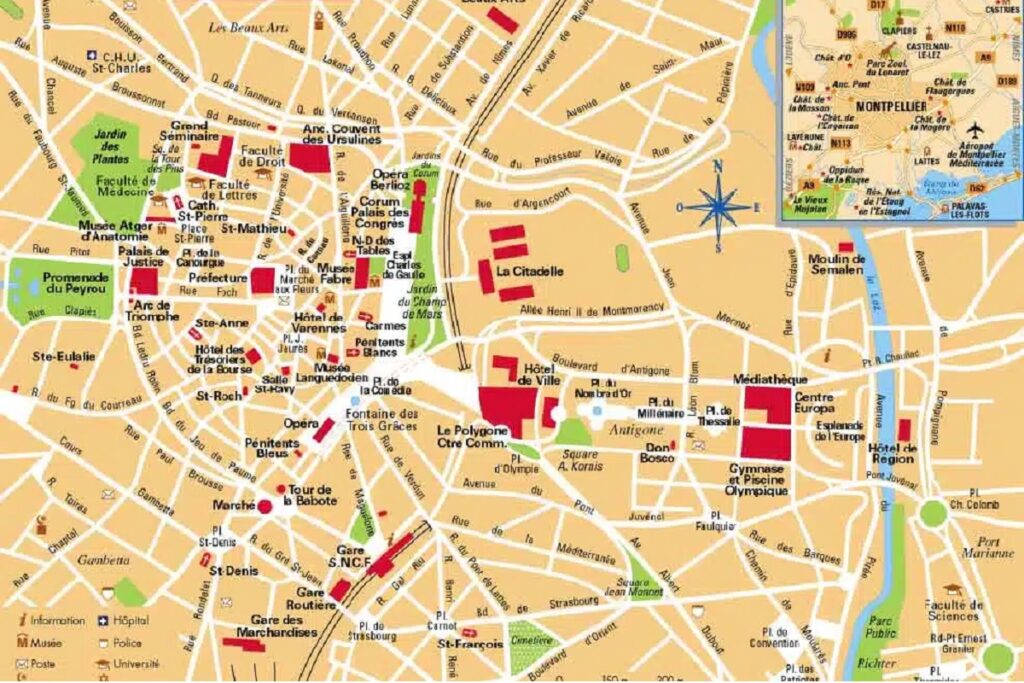What are the best things to do and see in Montpellier? Discover the 6 essential activities and places to visit in the city of Montpellier.
Montpellier is, in any season, the most charming city in the South of France. Elegant and cultural, with Mediterranean blood flowing in its veins, the city is brimming with dynamism. Lacking industry, Montpellier has primarily focused on students and their creativity. World-renowned architects are always there to add new architectural gems to the new districts. Montpellier’s trams, the latest designed by Christian Lacroix, are moving paintings and have been called “the sexiest in the world.” Admit it, it takes a surprising city to make trams sexy.
The historic medieval center of Montpellier, also known as the Écusson district, is a pedestrian area popular for strolling, relaxing in one of the shaded squares, and soaking up the atmosphere of the “village within the city.” You will see that Montpellier has many things to discover, but you will be equally surprised by the treasures found in the surroundings of the city, nicknamed Clapas or “The Gifted.”
A beautiful stay to plan, and that’s why we summarize the best things to do in the Languedoc capital if you visit for the first time.
1. Place de la Comédie and Esplanade Charles de Gaulle
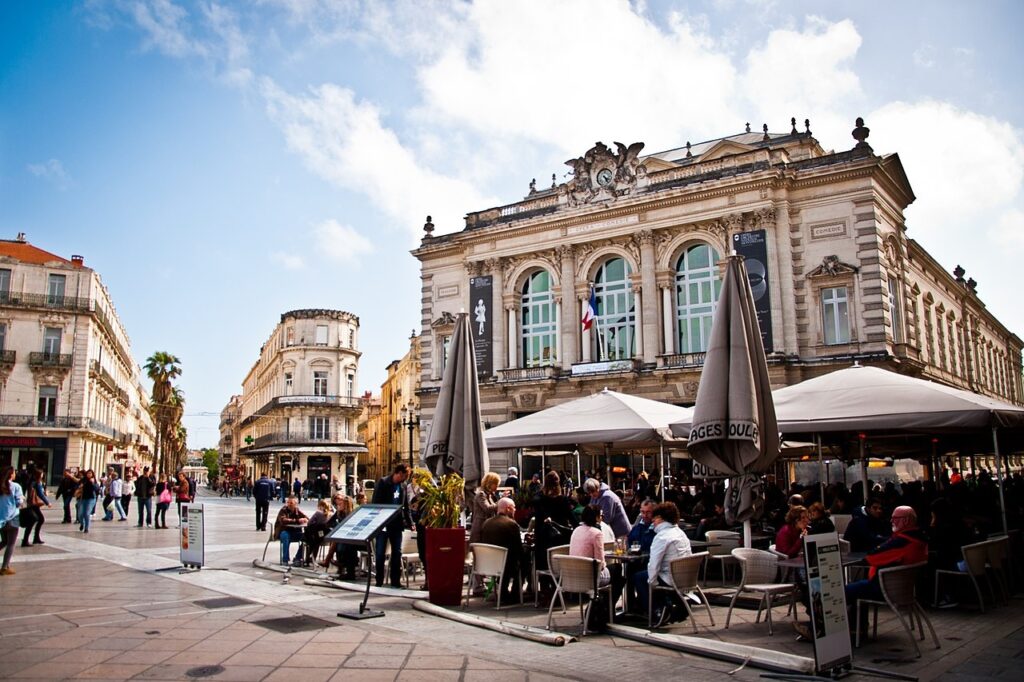
Place de la Comédie with its Three Graces Fountain, dating from 1776, is the heart of the inner city. On the southwest side of the square stands the theater (Opéra Comédie). From there, the main boulevards radiate towards the old town (most of the pedestrian area), known as the Écusson (see below). In the district, hidden behind unassuming facades, are magnificent private mansions. Usually closed to the public, some courtyards of these 17th and 18th-century residences can be discovered through guided tours.
From Place de la Comédie, you will see an esplanade shaded by plane trees. At the beginning of it, you will find the Tourist Office. This esplanade leads to the Corum, a venue housing an opera and conference hall built in 1990 by Claude Vasconi. From its roof, you will get a superb view of the Beaux Arts district and the hinterland. Esplanade Charles de Gaulle is often lively with markets, as well as seasonal festivals like the Hivernales and Estivales.
2. The Écusson District (Historic City Center of Montpellier)

The best way to explore the medieval streets of Montpellier in the Écusson district is to leave your map in your pocket and simply wander through this lovely pedestrian area. Among the most remarkable streets are Rue de l’Ancien Courrier, a narrow vaulted street paved with polished white marble and lined with chic shops, and the beautiful Rue des Trésoriers de la Bourse. To see beyond the beautiful facades, where architectural jewels are hidden, it is worth booking a guided tour with the tourist office, which has the key to most of the courtyards and carved stone staircases of private mansions (private residences).
Wandering through these small streets, you will come across beautiful little squares like that of the Saint Roch Church with its trompe l’œil or Place de la Canourgue. Further south of Place de la Comédie, you can admire the Tour de la Babotte. The building housing the Chamber of Commerce and Industry is also remarkable.
3. The Arc de Triomphe

Forming the entrance to the old town of Montpellier, the Arc de Triomphe, 15 meters high and built in 1691 in honor of Louis XIV, is located at the end of Rue Foch and faces the Peyrou promenade. Right next to it is the imposing Palace of Justice. Rue Foch is impressive for its beautiful 19th-century buildings.
4. La Promenade du Peyrou
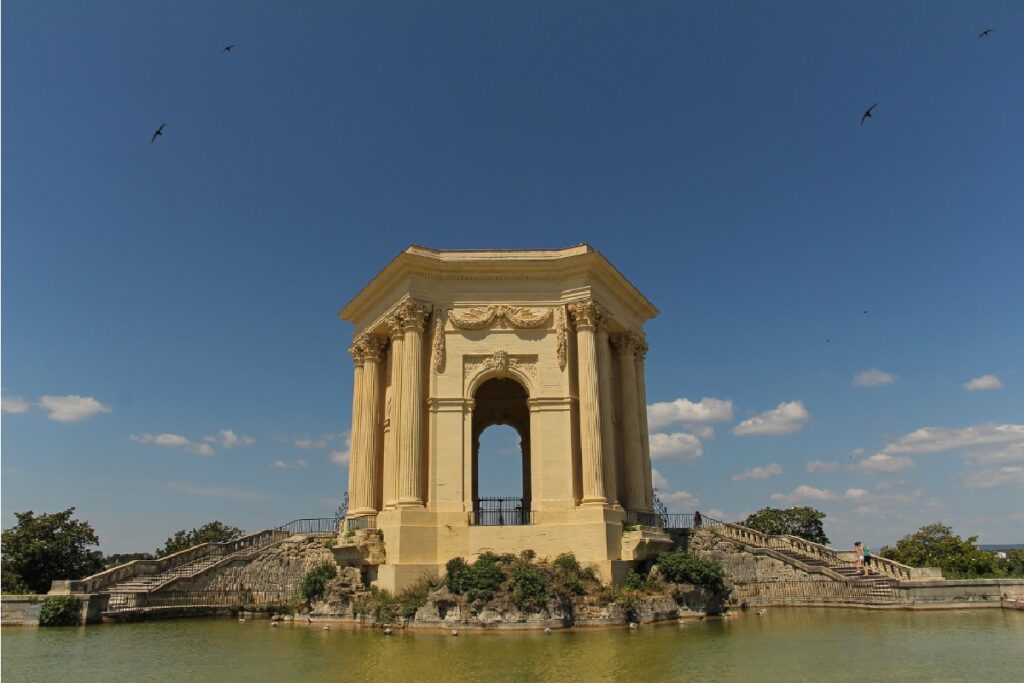
Pass under the triumphal arch, and you arrive at La Promenade du Peyrou, a park elevated on two levels, dating from between the 17th and 18th centuries, offering a beautiful view of both the Cévennes and the sea. Indeed, it is the highest point in Montpellier. In the center stands an equestrian statue of Louis XIV, the Sun King, dating from 1828, while at the western end of the terrace is a monumental water tower classified as a historical monument. It is fed by the Saint-Clément aqueduct, built between 1753 and 1766, and 14 kilometers long, ending in the 21.5 m high “Arceaux.” On both sides of the water tower, stairs lead to the Boulevard des Arceaux where the market is held.
5. The Jardin des Plantes
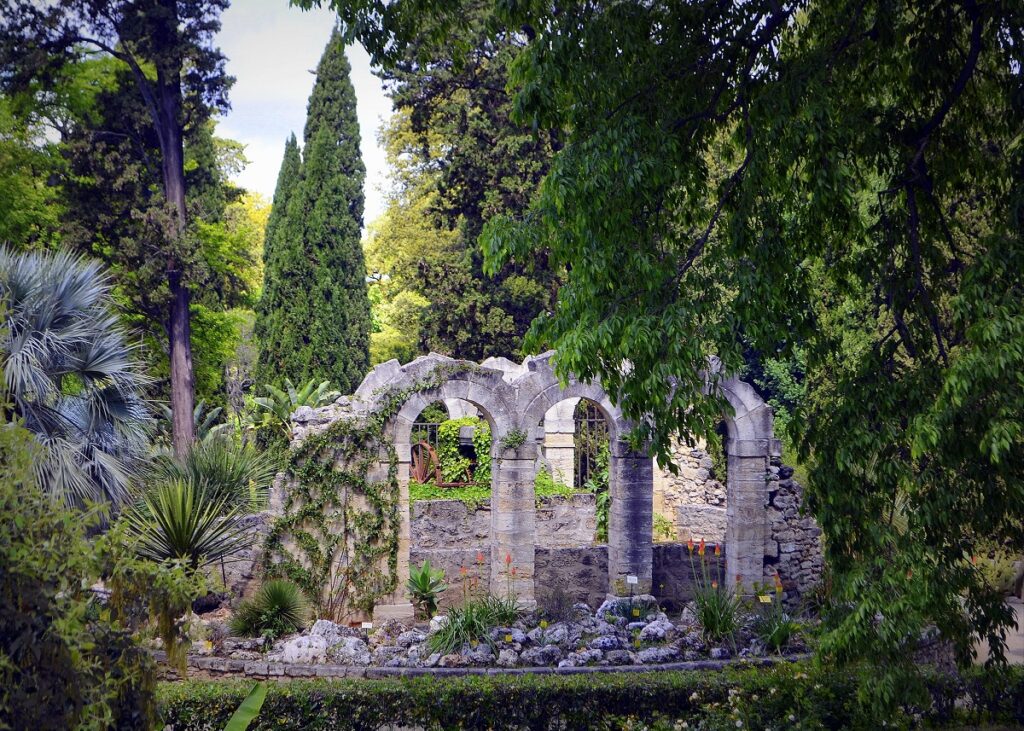
The oldest botanical garden in France, created in 1593 by Pierre Richer de Belleval, is truly worth a visit. The poet Paul Valéry is said to have composed some verses while chewing on rose petals here. Discover the tropical greenhouses, as well as a 200-year-old Ginkgo (or Silver Apricot) and a Phillyrea latifolia from the 16th or 17th century, which served as a mailbox for lovers who hid messages in the crevices of its gnarled trunk. From Peyrou, head down Boulevard Henri IV, and you’ll come across the Jardin des Plantes.
6. Saint Peter’s Cathedral
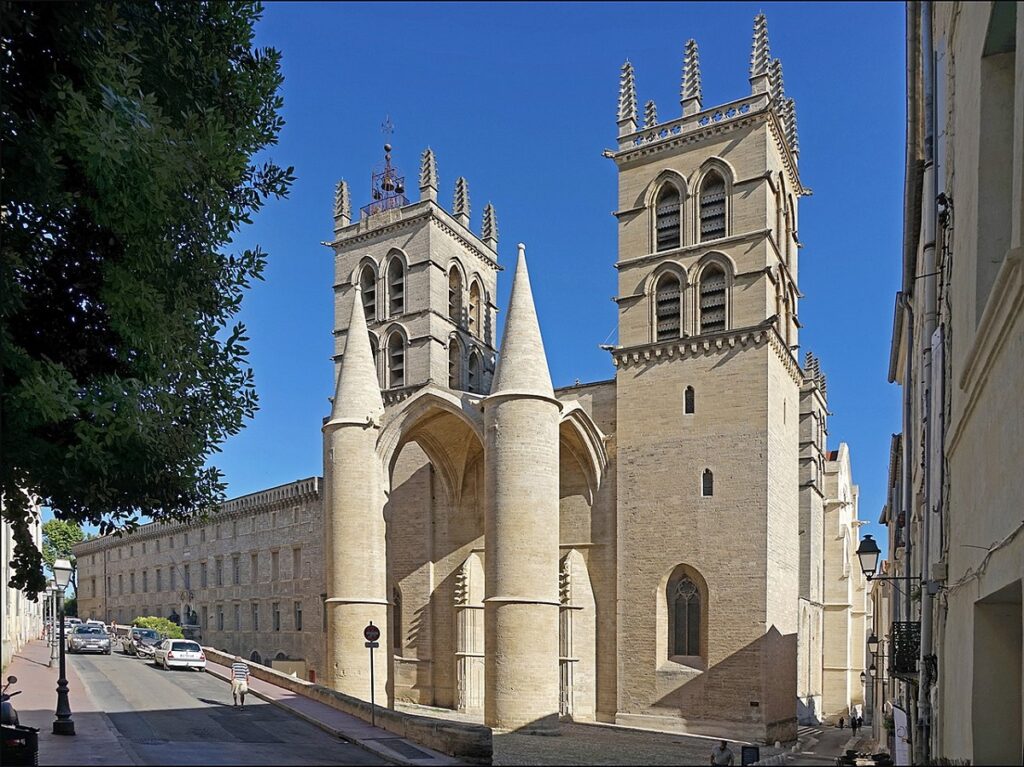
Not far from the Jardin des Plantes is one of the most impressive buildings in the city of Montpellier. In Rue de l’Ecole de Médecine, the gothic-style Saint-Pierre Cathedral, a historical monument, was founded in 1364 after the religious wars and restored in 1867. Its facade is adorned with its two impressive towers that serve as a huge vaulted entrance.
7. The Museum of Anatomy and the Atger Museum
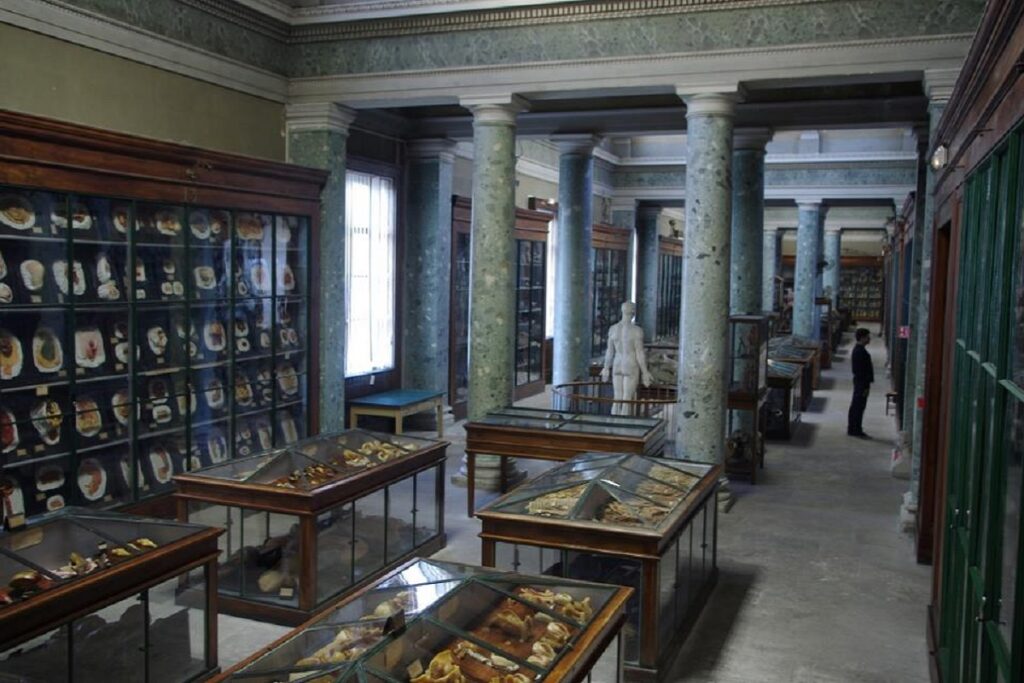
Nicknamed “The Museum of Horrors,” here you’ll find deformed skulls, hearts, livers, lungs, and bizarre sexual organs, all authentic specimens preserved for centuries to aid the study of anatomy. You’ll notably have to pass by a two-headed fetus in a cloudy glass jar. A bizarre and unusual museum that is among the best in the world in its field.
The medicine collections also include an exceptional set of drawings and prints at the Atger Museum. Right next to the Anatomy Museum and Saint Peter’s Cathedral, the venerable Faculty of Medicine, a former Benedictine monastery, houses this museum, the oldest in Montpellier. The museum has a superb collection of drawings from the French, Dutch, German, Italian, and Flemish schools, with works by Rubens, Tiepolo, Carracci, and Fragonard. To see some drawings, stored in sliding cabinets, you’ll have to pass through a dusty library with creaking floors.
8. Taste Local Wines and Gastronomy

Nice to do
Montpellier: we have selected for you the best offers
Montpellier is located in the world’s largest wine-producing region: Languedoc-Roussillon (now Occitanie) produces more bottles than many other countries. For about twenty years, vineyards have been paying special attention to quality. And with the help of the sun, Languedoc wines are excellent, especially the reds. Taste wines from Pic Saint-Loup, or Terrasses du Larzac! If you want to accompany a seafood dish, Picpoul-de-Pinet is the designated white wine. Note that in summer, every Friday, you can taste wines from local producers on the Esplanade Charles de Gaulle with the Estivales.
While Montpellier doesn’t really have an emblematic dish, the local cuisine is mainly inspired by the Mediterranean, and many restaurants in the city serve mussels, crab, oysters, and fish stews, especially in the Beaux-Arts district. If you’re looking for good places to eat during your stay in Montpellier, head to Les Bains (6 Rue Richelieu), Leclere (41 Rue de la Valfere), or the restaurant Les 40 Degrés (35 Rue Saint-Guilhem). For a more bistro-like experience, the Saint-Roch and Saint-Anne districts are full of good addresses. Wander around, and you’ll find your happiness.
Before heading home, pack a box of Grisettes in your suitcase, honey and licorice candies made in Montpellier since medieval times. The traditional packaging of these candies is very recognizable.
9. The Fabre Museum
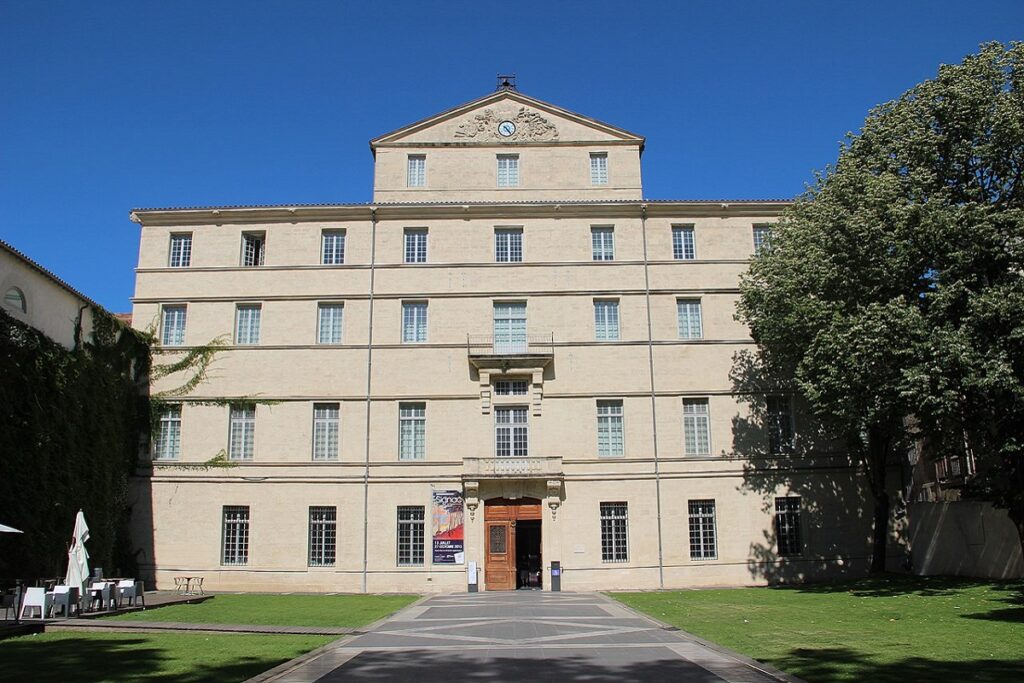
The Fabre Museum is the main art museum in Montpellier and houses one of the largest collections of French paintings outside of Paris. Located east of the Écusson, it overlooks the Esplanade Charles de Gaulle. Take the time to visit, as the permanent exhibition is well worth it. Remember, the first Sunday of each month, entry is free. The Fabre Museum is open every day except Monday.
10. The Antigone District
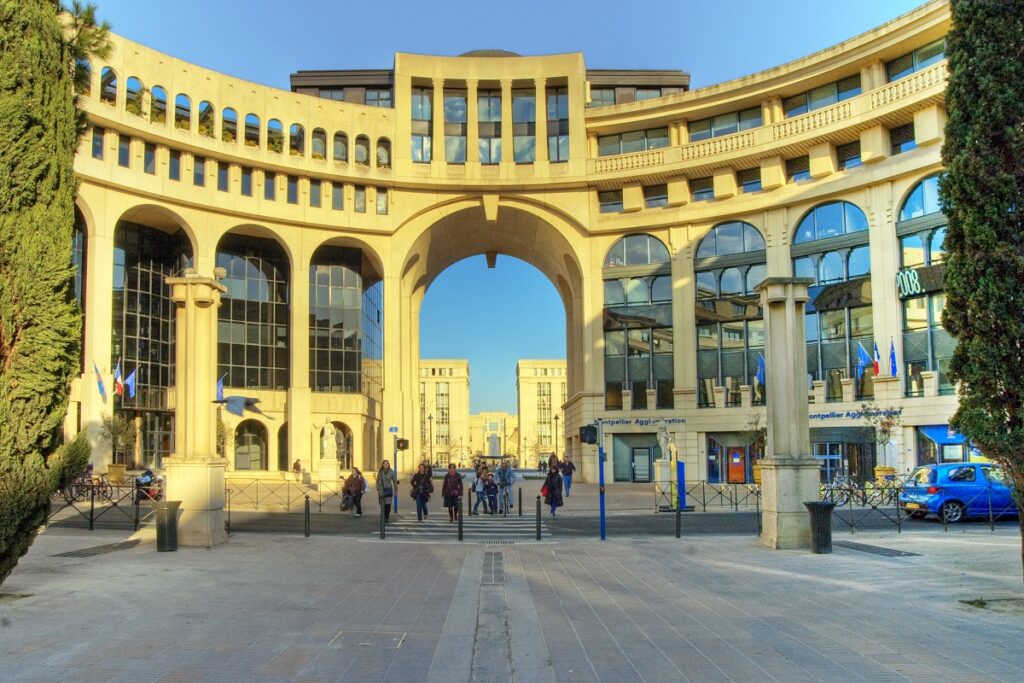
From Place de la Comédie, head towards the Polygone, a large shopping center with numerous shops, and cross it to the end. On the other side, you will arrive in the Antigone district. No, you haven’t changed cities, just architectural styles. Architect Ricardo Bofill built this district, which extends to the Lez River, and is a beautiful example of post-modern architecture.
Enjoy the lawn of the Esplanade de l’Europe to admire the Regional Hotel, located on the banks of the Lez. Along the river, you can also see new constructions like the Arbre Blanc and the New Town Hall.
11. Nightlife in Montpellier

Montpellier is a student city, making it the ideal place for those who love to go out, whether for after-work or late into the night every day of the week.
12. Boat Ride

If you’re visiting Montpellier, don’t forget to enjoy its coastline with a lovely boat ride. While renting a boat in Montpellier itself is impossible, there are many ports nearby, such as Palavas-les-Flots, Carnon, or La Grande Motte, just a few kilometers away. You can enjoy the Mediterranean for an afternoon, alone or with a skipper.
13. Château de Flaugergues
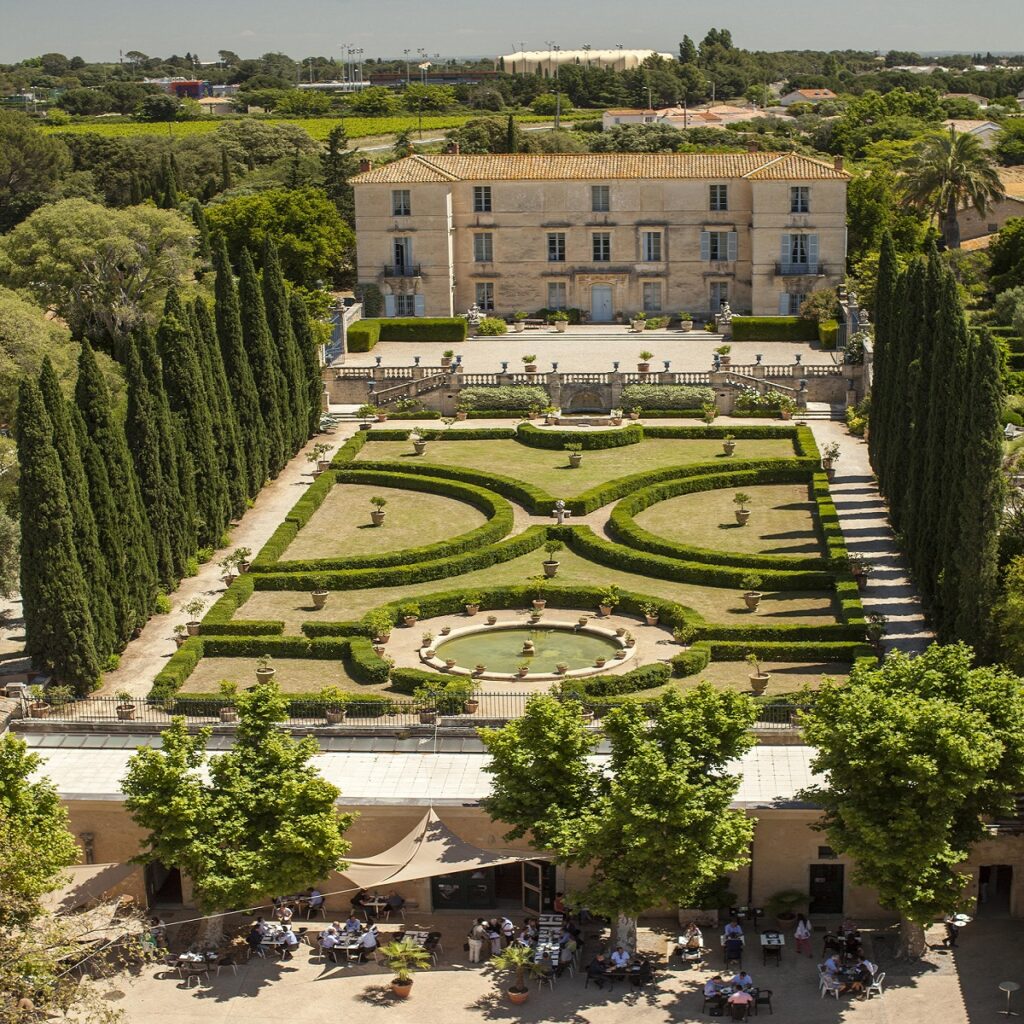
In Montpellier, a “folie” describes any secondary residence of the aristocracy under the Ancien Régime, and Montpellier was one of the most important cities in France for medicine, so wealthy nobles built private mansions in the suburbs. Château de Flaugergues is one of these “folies” and is considered by many as the most original in the city. The gardens are particularly beautiful, making this spectacular historical monument a must-visit in Montpellier. Address: 1744 Avenue Albert Einstein, Montpellier.
14. Hiking at Pic Saint-Loup

Pic Saint-Loup is a steep mountain located about 20 kilometers north of Montpellier. The summit, at 658 meters, is surrounded by limestone cliffs and vineyards, a trademark of the South of France. The summit is visible from much of the Hérault department and is inspiring for hikers and climbers. On foot, you can climb Pic Saint-Loup from the south side, on a six-kilometer trail from Cazevieille. The ridge path from Saint-Mathieu de Tréviers is also very pleasant, as it passes by Chateau de Montferrand. The Pic Saint-Loup wine region is one of the most renowned in Languedoc-Roussillon, so after your descent, you’ll have the opportunity to visit the surrounding cellars and vineyards. Most of them produce fabulous reds, with blends of Syrah, Grenache, and Mourvèdre.
15. Take a tour of the new Halles Laissac
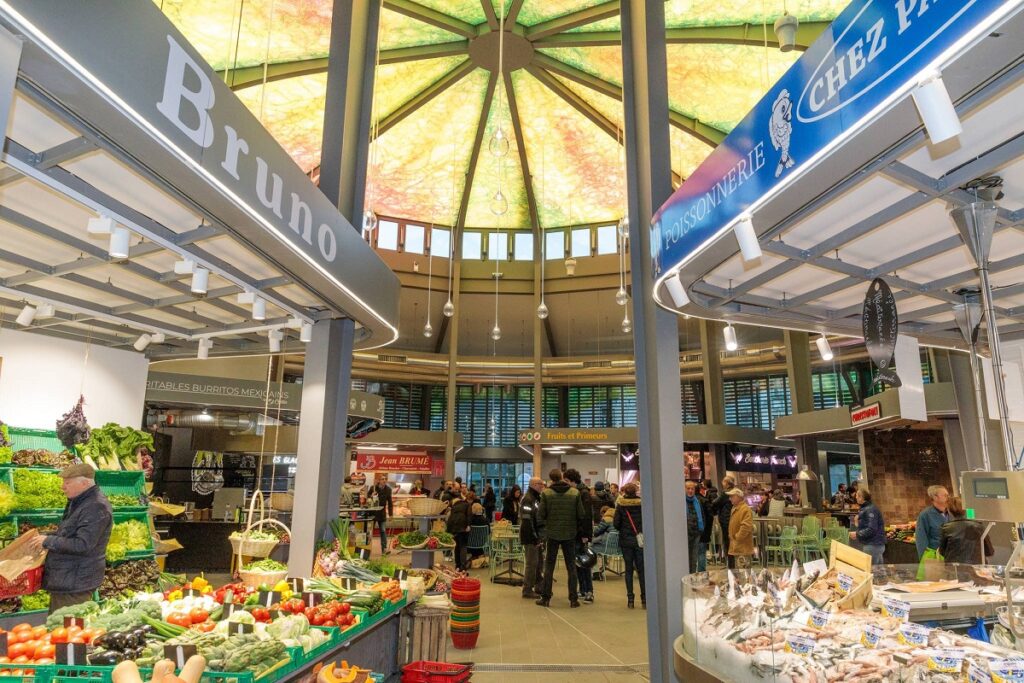
Inaugurated on December 1, 2018, the new Halles Laissac are well worth a visit if you’re visiting Montpellier. Located opposite the Babotte tower, this is a place for gourmands: you’ll find a wine shop, a merchant of Corsican specialties or a pastry chef specializing in macaroons. You can also cook meat and fish on site. These new halles mark the revival of this district, which is well worth a visit. Open Monday to Saturday 8.00am to 8.00pm and Sunday 8.00am to 1.30pm.
16. Around Montpellier
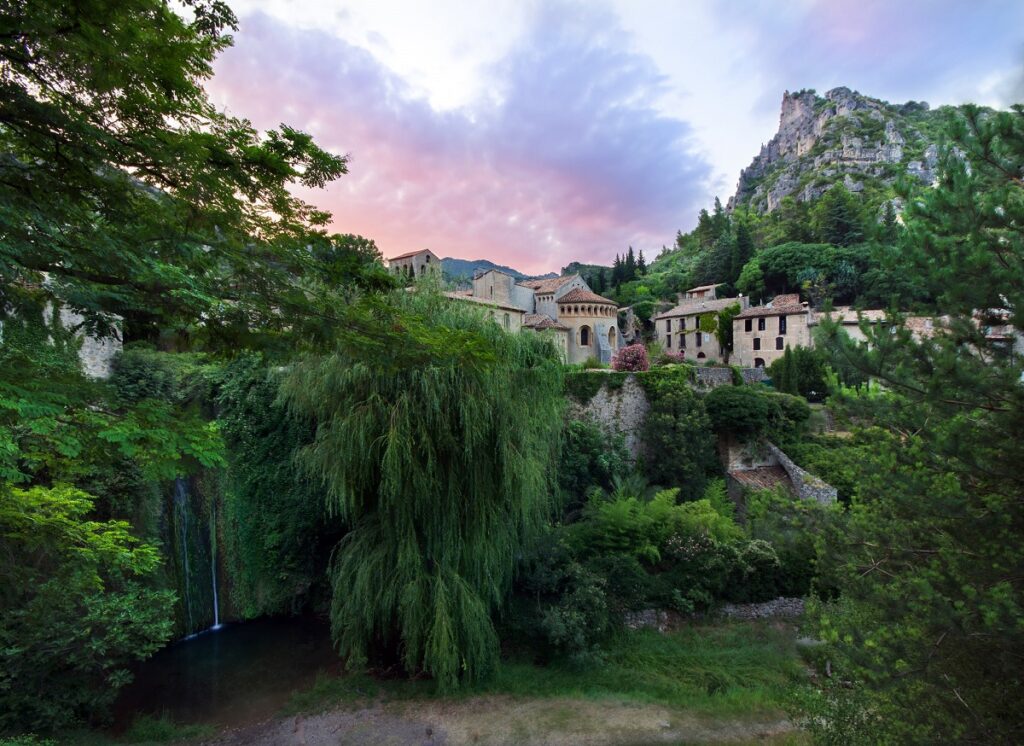
- Saint-Guilhem-le-Désert
- Cathédrale de Maguelone
- Grotte des Demoiselles à St Bauzille de Putois
- Grotte de Clamouse à St Jean de Fos
- Sète
- Les plages
- Lodève
Become an Oyster Farmer for a Day

Why not become an oyster farmer for half a day? For €50 per person, participate in 2.5 hours of initiation alongside Yannick, who will share his knowledge of oyster farming. Then, get involved in the various stages of shellfish culture. Finally, conduct a quality check by tasting a dozen oysters each, served with 2 glasses of wine.
Click here for an introduction to oyster farming!
How Many Days to Visit Montpellier?
It depends on your preferences and travel habits. Often, 2 to 3 days are enough to visit Montpellier. However, if you want to explore the surroundings, consider stays of at least 5 days.
What to See and Do in Montpellier in 1, 2, or 3 Days? Where to Walk on Sunday?
Day 1: Discover Old Montpellier. Explore Place de la Comédie, the heart of the city. Visit Saint-Pierre Cathedral. Wander through the Écusson district, the historic center, with its picturesque streets. Admire the Porte du Peyrou and the Saint-Clément aqueduct.
Day 2: Museums and gardens. Visit the Fabre Museum, which houses a rich art collection. Discover the Jardin des Plantes, one of the oldest botanical gardens in France. Stroll through the Antigone district, known for its modern architecture.
Day 3: Relaxation and exploration. Enjoy a day at the beach, like Carnon, or head to Palavas-les-Flots. Explore the Odysséum district, where you’ll find shops, restaurants, and the Mare Nostrum aquarium.
If you have more time, you can also hike at Pic Saint-Loup, discover local wine estates, or explore medieval villages nearby. The activities and places mentioned can be enjoyed over the weekend! You can even get the City Card, which offers discounts on your visits.
Best time to go to Montpellier
First, know that Montpellier is a very touristy city in summer. Life is very pleasant, but students have returned, and locals go on vacation. Certainly, life does not stop, but from September, the rhythm resumes.
In summer, the main activity is beach days. In the evenings, the beach bars between Villeneuve-lès-Maguelone and La Grande-Motte are lively.
Winters are rather mild, but January and February are generally quite cold.
How to Get to Montpellier?
To get to Montpellier, simply take the train, which will drop you off at the fully renovated Saint-Roch station, right in the heart of the city center.
🚆 Check Train Schedules & Prices
You can also fly and land at Montpellier Fréjorgues Airport. Check the best flights to Montpellier on Skyscanner.
Where to Stay in Montpellier?
Although Montpellier is a student and young city, there aren’t many youth hostels, but accommodation in this city is relatively accessible for tourists. You can read our guide to choose the area to stay in Montpellier. To find a cheap hotel in Montpellier, search on this hotel comparator.
Compare and book hotels in Montpellier
We particularly recommend these hotels in Montpellier
Map & Plan of Montpellier
To help you, here is a map of Montpellier and its city center.
